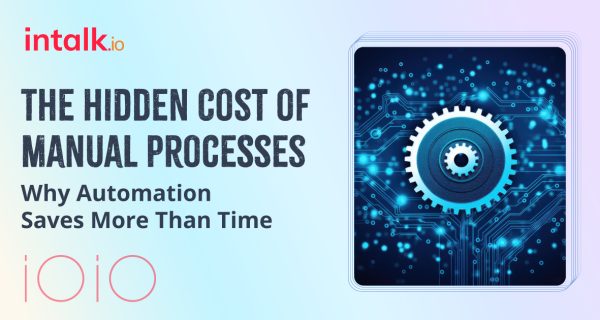Let’s Talk,
The secret to a good experience isn’t the multiplicity of features on offer. A successful brand shapes customers’ experiences by embedding the fundamental value proposition in every feature. The quality, quantity, and communication throughout the purchase and service process or presentation create valuable interactions for a better customer relationship and customer experience. Even for your cloud call center solution, communication is the key.
A core component of CXM, Customer Communications Management is defined as the strategy to improve the creation, delivery, storage, and retrieval of outbound communications, including those for marketing, new product introductions, renewal notifications, claims correspondence, and documentation, bill and payment notifications. These messages are short-term conversations amongst a wider audience yet so inclusive and collectively based that may occur in regular time intervals with an envision of a continuing relationship with the customer. Consequently, questions may extend to the customer’s awareness of alternative suppliers, new features the customer might desire, and what it sees as challenges to its competitiveness. Given the broad scope of the inquiry, this type of monitoring shouldn’t be triggered solely by a customer-initiated transaction, instead, information on a company’s key products and services should be gathered and conveyed at scheduled intervals, or periodically.
These interactions can happen through a wider range of media and output, including documents, calls, emails, Short Message Service (SMS), social media, and web pages. CCM solutions support these objectives, providing companies with an application to improve outbound communications with their distributors, partners, regulatory bodies, and customers.
When you put the customer at the center of everything you do; your products, in-store, and digital experiences, and customer service are all designed with the goal of providing a consistently great experience and adding value can be referred to as customer-centricity.
Customer centricity is a business model that places the customer at the center of a company’s approach to business, which means the company understands that creating customer value and truly putting the customer first generates the most overall business value. The customer-centered model helps with possible interactions between the brand and the consumer. This includes all types of interactions a person has with a brand or company from interest to purchase including the ongoing relationship they have which may include customer service interactions. These customer engagements will help the problem-solving process be more effective, easy, and understandable.
Communication Channels are the different options a customer has available to them to interact with a company. This can include in-person, web, or mobile apps, as well as phone conversations with customer service departments including engagement on social media platforms via comments, direct messages, and more upgrading ways of messages. The channels are different for each company. And every step matters, which a customer takes via different channels while in the process of completing some interaction or transaction with a brand. An omnichannel cloud call center solution is your centralized communication channel with all social channels linked there.
Customer Journey Analytics is the process of tracking and analyzing the way customers use combinations of channels to interact with an organization. Analytics solutions give you real-time data to identify pain points and critical moments that customer experiences and inform the next best actions to enhance customer experience at every touchpoint.
These touchpoints are the Points of Interactions between the customer and the company or brand. These are used in the mapping process to represent separate interactions and can include any and all information on the touchpoint, emotions, customer segments involved, satisfaction data, etc. A visit through different channels is an experience altogether that moves consumers down a path from awareness through purchase. This journey mainly helps with understanding the buyer persona, wherein information is used by businesses to create tailored messaging related to the interests and needs of the company’s customer base. Generally, it includes age, location, gender, income, occupation, hobbies, and key pain points. These points create valid data to target the right target group to target the right audience.
Contacts Strategy is the key, to begin with, and interaction with an existing customer or a new one to properly manage the interaction plan used with customers once the company has undertaken a journey mapping effort. This is often undertaken once a customer has been analyzed enough to allow for customer segmentation to ensure a proper strategy is employed in communication efforts going forward.
Customer Lifecycle is a process like a cycle moving in a circular motion that represents the complete customer journey from interest through purchase, including any nurturing and customer service interactions up until the customer ceases doing business with the company. This cycle keeps on moving until the brand is communicating and the consumer is responding, purchasing, and connecting.
Customer Feedback is the information customers provide either on their own as part of a related experience or are sought out by the company as a way to improve services and experiences.
Identify the Voice of Customers through their feedback about their experiences with and expectations for your products or services. This data is a powerful analytical tool that is made up of user behaviour data, recorded phone conversations between your frontline staff and your customers, direct customer feedback, discussions in social media. It can provide an incredibly honest insight that can be used to solve previously unidentified problems as well as aid in improved updates to products and services.
Interactions create Customer Loyalty which refers to how likely a customer is to prefer one company or brand over another. This is built with trust and experience between the customer and company. Customers that feel respected and provided with a consistently positive experience will be more loyal to the company providing that and it can lead to an unofficial brand ambassadorship. And creates Customer Satisfaction, a combination of a customer’s positive and negative reactions after interacting with your product or service. This is generally gauged via a customer-completed survey done as close to the interaction as possible.
The Employee Experience is vital as customers too. Customer experience does not improve until it becomes a top priority and a company’s work processes, systems, and structure change to reflect that. Service operations must ensure that processes, skills, and practices are attuned to every touchpoint. Organising communications and training strategy for inbound call center solution or outbound call center that conveys the economic rationale for CEM and paints a picture of how it will alter work and decision-making processes.
And remember first Listen and then share!





